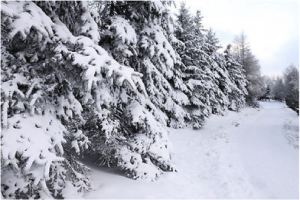 We’ve made it through January, but, for many people who don’t have the luxury of living in a part of the country where sunshine and warm temperatures are present all winter long, we’ve still got a ways to go before we reach the time of year where open-toed shoes become acceptable once again. Because many people are less focused on their feet in the winter—being that feet are constantly covered up—mistakes that can cause serious podiatry issues are often made. Here are some things to remember when dressing your feet up in their winter wear.
We’ve made it through January, but, for many people who don’t have the luxury of living in a part of the country where sunshine and warm temperatures are present all winter long, we’ve still got a ways to go before we reach the time of year where open-toed shoes become acceptable once again. Because many people are less focused on their feet in the winter—being that feet are constantly covered up—mistakes that can cause serious podiatry issues are often made. Here are some things to remember when dressing your feet up in their winter wear.
Participating in Winter Sports
Like most Americans, you may be doing a fair amount of skiing or snowboarding this winter. When you are engaging in winter activities, make sure you are always wearing the appropriate footwear. Always use regulation boots when you are skiing or snowboarding. Your boots should be tight enough to provide optimal ankle support, but not so tight enough to cause pain or affect mobility of your heel, in-step, or ball of your foot.
You Need Boots
Snow boots are a must-have item during winter months, especially when there is precipitation. However, while the waterproof material and layer, or two, of socks you’re wearing will keep your feet warm, this will also cause feet to sweat. Sweat can cause feet to become more prone to bacterial infections, so think about washing your feet, and changing your socks, multiple times throughout the day if you notice any persistent sweating.
You Need Boots That Fit Well
On the subject of boots, make sure they fit right. Boots that are too big or too small can result in friction, which can cause blisters, chafing, or other foot injuries. Likewise, socks that are too tight can cause toes to bunch and can leave painful blisters or corns on your toes.
A Final Reminder
While it may seem obvious, always keep your feet covered in winter weather. Sandals, flip-flops, or any shoe that reveals skin on the foot is a bad decision, even if you are just taking a quick walk outside.